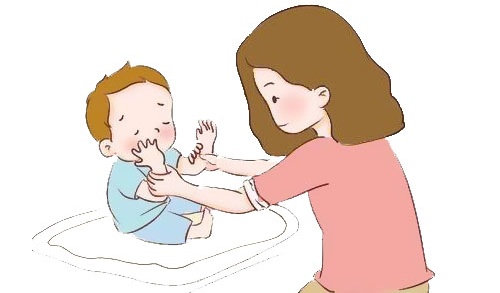“拿法”是用拇指和食、中两指相对用力(或用拇指和其余4指相对用力),提拿一定部位和穴位,做一紧、一松的拿捏。拿法动作要缓和而有连贯性,不要断断续续;用力要由轻到重,不可突然用力。“拿法”刺激较强,常配合其他手法应用于颈项、肩部、四肢上的穴位和肌肉较丰满的部位。

“按法”是用手指或手掌按压小儿的一定部位或穴位,逐渐用力向下按压。主要包括三种形式,分别为:“拇指按法”、“中指按法”和“掌按法”。“按法”是一种刺激较强的手法,常与“揉法”结合应用,组成“按揉”复合手法。“按揉”就是先按后揉,或者边按边揉。
"Pressing method" is to press certain parts or acupoints of children with fingers or palms, and gradually press down with force. It mainly includes three forms: thumb press, middle finger press and palm press. "Pressing method" is a strong stimulation technique, which is often combined with "kneading method" to form a "pressing and kneading" composite technique. "Press and knead" is to press first and then knead, or press and knead at the same time.

